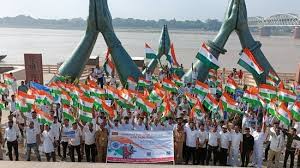Regrowing Teeth Could Be the Future of Dentistry

The idea of regrowing teeth may seem like something straight out of science fiction, but it is quickly becoming a reality in the field of dentistry. With advances in stem cell research, biotechnology, and regenerative medicine, scientists are exploring new ways to regrow damaged or lost teeth, offering hope to millions of people worldwide who suffer from tooth loss. This revolutionary approach to dental care could reshape the future of dentistry, making traditional procedures like fillings, crowns, and implants obsolete.
In this article, we’ll explore the science behind regrowing teeth, the latest research in this area, and how this new technology could change the way we approach dental care in the future. We’ll also answer some frequently asked questions about the process, potential benefits, and challenges of regrowing teeth.
The Need for Regenerative Dentistry
Tooth loss is a common issue that affects millions of people globally. According to the American Dental Association, nearly 178 million Americans are missing at least one tooth, and 40 million are missing all of their teeth. Traditional dental solutions like implants, bridges, and dentures have helped to restore function and appearance, but these options come with limitations, such as discomfort, the risk of infection, and the need for regular maintenance.
Moreover, these treatments don’t address the underlying issue of tooth regeneration. While advancements have been made in dental technologies, such as the use of CAD/CAM systems for custom crowns and 3D printing for implants, no method can regenerate a lost tooth or restore natural dental structure. This is where regenerative dentistry comes into play.
Regenerative dentistry focuses on stimulating the body’s natural ability to heal and regenerate tissues, including teeth. The idea is to encourage the growth of new teeth or tooth-like structures, which could lead to a more permanent and natural solution to tooth loss.
How Regrowing Teeth Works
The process of regrowing teeth involves stimulating the body’s natural healing abilities to produce new tooth tissue. While the exact methods are still being researched, several promising approaches are currently being explored by scientists and dental professionals.
Stem Cell Therapy
One of the most exciting areas of regenerative dentistry is the use of stem cells. Stem cells are unique cells that have the ability to transform into different types of tissue, including bone and dental tissue. Researchers are exploring ways to use stem cells to regenerate teeth by extracting them from the patient’s own body, such as from dental pulp or other tissues, and then using these cells to grow new teeth.
Stem cell therapy could potentially offer a natural, long-term solution to tooth loss. When stem cells are combined with biomaterials, they may be able to stimulate the growth of new tooth structures. This method could eliminate the need for artificial replacements like implants, offering a more biocompatible and durable option.
Gene Therapy
Gene therapy is another promising approach that may allow scientists to regrow teeth. This technique involves introducing specific genes into a patient’s cells to encourage the formation of new teeth. By inserting genes that control the growth of tooth cells, researchers aim to trigger the process of tooth development in adults.
Gene therapy for tooth regeneration is still in the experimental phase, but early studies have shown promising results. Researchers are particularly interested in using gene therapy to stimulate the regrowth of the tooth’s enamel and dentin, which are the key components of a healthy tooth. If successful, gene therapy could allow for the regrowth of a fully functional tooth that mimics the natural structure of the original tooth.
Tissue Engineering
Tissue engineering combines cells, biomaterials, and growth factors to create new tissues or organs. In the case of tooth regeneration, tissue engineering involves creating a scaffold for new tooth cells to grow on. This scaffold may be made from biodegradable materials that support the development of tooth-like structures. By adding growth factors or other signaling molecules, researchers can encourage the growth of specific tooth tissues.
While tissue engineering for teeth is still in its infancy, scientists have successfully grown tooth-like structures in lab settings. This includes the creation of small tooth-like organoids and mini teeth using stem cells and scaffolds. The next step is to translate these lab-grown tissues into functional, full-sized teeth that can be used in human patients.
Dental Pulp Reprogramming
Dental pulp reprogramming is a novel approach to tooth regeneration that focuses on reprogramming the cells found in the dental pulp, the soft tissue inside the tooth. These cells can potentially be reprogrammed to act like stem cells, capable of producing new tooth tissues.
Scientists are investigating how to trigger these reprogrammed cells to grow new tooth material and possibly even regenerate a full tooth. This process has shown potential in animal studies, with some success in regrowing partial teeth or tooth-like structures. Future research may lead to the development of procedures that allow for the regrowth of lost or damaged teeth in humans.
Potential Benefits of Regrowing Teeth
Regenerating teeth offers a range of potential benefits over traditional dental treatments:
Natural Restoration
Regrowing teeth offers a more natural solution to tooth loss. Unlike implants or dentures, which are artificial and require regular maintenance, regrown teeth would function just like natural teeth. They would be composed of the same biological materials—enamel, dentin, and pulp—making them much more compatible with the body and reducing the risk of complications.
Cost-Effective
Over time, dental procedures like implants and crowns can be expensive. The cost of tooth replacement often increases due to the need for maintenance, replacement, or repairs. Regrowing teeth could provide a more cost-effective long-term solution. Once the technology becomes widely available, the cost of regenerative dental treatments may be lower than current options, especially if the need for follow-up procedures is minimized.
Reduced Risk of Infection
One of the risks associated with dental implants and artificial teeth is the possibility of infection. Implants, for example, require surgery, which comes with the risk of infection at the implant site. Since regrown teeth would be made from the body’s own cells, the risk of infection could be much lower, leading to fewer complications.
Enhanced Aesthetic Outcomes
Regenerated teeth could offer better aesthetic results than traditional dental solutions. Because they would be made from natural tissue, regrown teeth would likely blend in better with the surrounding teeth, leading to a more natural and aesthetically pleasing appearance.
Preservation of Jawbone Health
When a tooth is lost, the bone around the tooth socket often begins to resorb, leading to a decrease in jawbone density. This can cause changes in the shape of the face and may require additional procedures like bone grafts to prepare the area for implants. Regrowing teeth could help preserve the jawbone, as the tooth would stimulate the surrounding bone tissue in a way that implants and dentures do not.
Challenges and Limitations
Despite the promising potential of tooth regeneration, there are still several challenges and limitations that need to be addressed before this technology becomes mainstream.
Complex Biology of Teeth
Teeth are highly complex structures, and regrowing them is not as simple as replacing lost tissue. The tooth development process involves multiple stages, and recreating the intricate structures, such as the enamel, dentin, and root, presents a significant challenge. Researchers must fully understand the molecular signaling pathways involved in tooth growth before they can replicate the process effectively.
Regulatory and Ethical Issues
As with any new medical technology, there are regulatory and ethical issues surrounding the use of stem cells, gene therapy, and other regenerative techniques in dentistry. While stem cell therapy has shown promise in animal studies, clinical trials in humans are still limited. Regulatory bodies, such as the U.S. Food and Drug Administration (FDA), will need to establish guidelines for the safe use of these therapies in dental treatments.
Cost and Accessibility
While regenerative dentistry has the potential to be cost-effective in the long run, the initial cost of developing and implementing these treatments may be high. Additionally, access to cutting-edge regenerative therapies may be limited to certain regions or populations, making it difficult for everyone to benefit from these innovations.
Long-Term Effects
Since regenerative dental treatments are still in the experimental phase, the long-term effects of regrown teeth are not yet fully understood. While initial studies are promising, more research is needed to determine the durability, safety, and effectiveness of regenerated teeth over time.
Frequently Asked Question
How long will it take before regrowing teeth becomes available for patients?
While research is progressing, it may still take several years before regrowing teeth becomes a viable treatment option for patients. Clinical trials and regulatory approval are ongoing, and it’s difficult to predict exactly when the technology will be widely available.
Will regrown teeth look and feel like natural teeth?
Yes, the goal of tooth regeneration is to create teeth that resemble natural teeth in both appearance and function. Regrown teeth would be made of the same materials—enamel, dentin, and pulp—so they should feel and function like natural teeth.
Can I regrow my teeth if I’m an adult?
Currently, most tooth regeneration techniques are being tested in animals and are still in the early stages of development. However, it is possible that regenerative therapies may one day be used to regrow teeth in adults, potentially allowing people to replace lost teeth later in life.
Are stem cell treatments safe for tooth regeneration?
Stem cell treatments are still being studied, but early research suggests they may be a safe and effective way to regenerate teeth. However, more research is needed to determine the long-term safety and efficacy of stem cell-based tooth regeneration.
Will I need to undergo surgery for tooth regeneration?
Depending on the method used for tooth regeneration, surgery may or may not be required. Some techniques, like stem cell therapy, may involve minimally invasive procedures, while others may require more invasive surgery.
Can regenerative dentistry replace dental implants?
In the future, regenerative dentistry could provide an alternative to dental implants, offering a more natural and potentially more affordable solution for replacing missing teeth. However, dental implants are still a widely used and effective treatment option.
Are there any risks associated with tooth regeneration?
As with any medical procedure, there are potential risks involved in tooth regeneration. These may include infection, complications related to stem cell treatments, and the possibility that the regrown tooth may not function as expected. Researchers are working to minimize these risks through careful testing and development.
Conclusion
The potential for regrowing teeth represents an exciting leap forward in dental care, offering the promise of natural, long-lasting solutions to tooth loss. Although there are still many hurdles to overcome, the progress made so far is encouraging, and regenerative dentistry could one day revolutionize the way we approach dental health. As research continues, we can expect to see new technologies and treatment options that bring us closer to a future where tooth regeneration is a reality for everyone.



